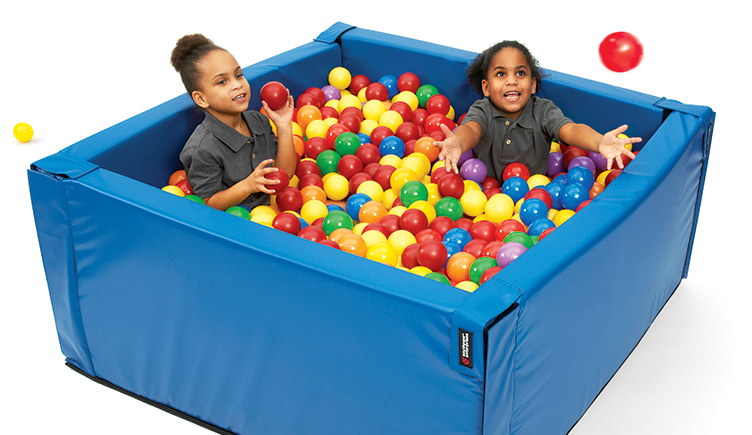The Conway Human Development Center (CHDC) is a state-operated facility located in Conway, Arkansas. It provides residential care and services for individuals with intellectual and developmental disabilities. The Center offers a range of services, including medical care, therapeutic programs, educational services, vocational training, and recreational activities. CHDC focuses on helping residents improve their quality of life, develop life skills, and achieve greater independence to the extent possible.
Established to support individuals who may require more intensive care than can be provided in a typical community setting, the facility often works with people who have significant physical and developmental challenges. Its mission is to promote residents’ dignity, self-sufficiency, and overall well-being. As occupational therapists (OTs) at CHDC, we are part of an interdisciplinary team who work together to improve the life of those we serve.
To illustrate how we use the interdisciplinary team approach to address clients’ needs, we will share how the team worked together on Charlie’s care. OTs collaborated with professionals from different fields to improve his quality of life, particularly through the use of protective equipment, particularly a helmet. Here are some key aspects of how Occupational Therapy was instrumental in addressing Charlie’s needs:
1. Collaborative Decision-Making
Early in Charlie’s journey, professionals including OTs, the direct care staff from his residential home, and psychological examiners collaborated to select the appropriate helmet, which was then customized to meet Charlie’s medical, psychological, and behavioral needs.
Later, when the psychological examiner requested a hardshell helmet, the OT called a team meeting to ensure input from wound care professionals to confirm that the heavier helmet wouldn’t hinder the healing process.
2. Continuous Monitoring and Adjustments
Throughout Charlie’s journey, the OTs consistently modified his helmet to accommodate changes in his self-injurious behavior (SIB) and the healing process. For example:
-Occupational Therapy added custom strapping to address helmet removal, involving input from both the psychology team and the program coordinator.
-Later, Occupational Therapy added moleskin to the inside of the helmet to prevent further injury, collaborating with the RN to prevent harm while also educating the staff on proper care of the equipment.
3. Specialized Input
The team of OTs played a key role in ensuring that the helmet was continually updated and improved. The addition of neoprene sleeves to prevent skin irritation and the switch to more durable metal buckles illustrate how OT expertise helped enhance the helmet’s function and comfort.
The OTs working alongside the interdisciplinary team were proactive in managing more complex issues, such as addressing Charlie’s increasing self-injurious behavior through meetings with psychology, the program coordinator, and medical staff, demonstrating a holistic approach to care.
4. Adaptive Equipment Enhancing Quality of Life
Adaptive equipment, such as Charlie’s helmet, plays a vital role in preventing injury and promoting safety. The helmet’s design and the OTs’ ongoing modifications were continually adapted to Charlie’s behaviors and evolving needs. This approach not only reduced physical harm but also addressed the underlying behavioral and psychological issues that contributed to the SIB.
The OTs’ interdisciplinary collaboration ensured that Charlie’s helmet was more than just protective gear—it became a dynamic solution that was refined over time. For instance, ordering a new helmet with hardshell ear coverings and reducing repair needs due to medication changes demonstrated that the equipment was aligned with broader medical and behavioral strategies.
5. Holistic Focus on Overall Well-Being
In addition to physical safety, the interdisciplinary team worked toward understanding the root causes of Charlie’s SIB. A special meeting was scheduled to bring medical, psychological, and program staff together to address the behaviors holistically. This included exploring sensory solutions (that the occupational therapist consulted on) and medical conditions that might contribute to the self-injury, indicating a broad focus on improving Charlie’s overall well-being.
Occupational Therapy documented a decrease in required helmet repairs that reflected a broader improvement in Charlie’s condition, possibly linked to changes in medication, demonstrating that the interdisciplinary approach had long-term benefits beyond simply equipment adjustments.
Conclusion
We, as occupational therapists, play an instrumental role with the team regarding adaptive equipment such as helmets. Occupational Therapy’s role within an interdisciplinary approach, paired with adaptive equipment, played a pivotal role in improving Charlie’s quality of life. By continually modifying the helmet and addressing the underlying causes of self-injurious behavior, the team ensured that Charlie was receiving holistic care aimed at both immediate safety and long-term well-being. This kind of collaborative care highlights the importance of multiple disciplines working together to create solutions that evolve as the individual’s needs change. And how one profession, in this case Occupational Therapy, can lead interdisciplinary teams to great success and positive outcomes for individuals like Charlie.



